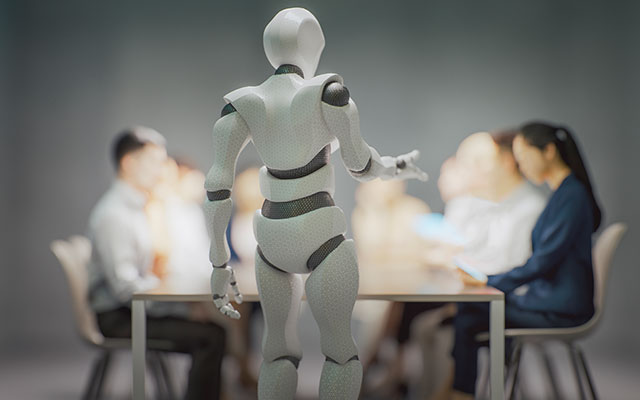FEATURE
Can Generative AI occupy the new seat of learning?
AI has taken significant strides in recent years, best illustrated by generative AI like ChatGPT storming onto the scene.
Thus, a monumental shift toward generative AI and automation tools like ChatGPT has been initiated, potentially transforming various industries through innovation.
One of the sectors in a position to be transformed by generative AI is education. As a result of the revelations mentioned above, the learning sphere will likely find itself immersed in technology-heavy digital transformation practices.
What Role Can Generative AI Play In Education?
How can generative AI be implemented into learning and education?
The potential applications of generative AI are seemingly unending. Personalised learning content is one standout example that’s creating a buzz.
According to experts, digging deeper and stoking more innovation with generative AI will enable educators to develop interactive and engaging lessons and experiences for students. In doing so, these instructors can maximise the growth of their pupils.
Here’s a list of generative AI use case examples:
- Creating study plans tailored to individual students' needs according to their strengths, weaknesses, and overall performance.
- Developing questions and problems for students to answer and solve based on their current achievement and comprehension levels.
- Producing real-time assessments and feedback to help teachers quickly flag student weaknesses and provide additional support.
- Generating interactive and engaging games, simulations, and similar learning activities to aid students in grasping sophisticated concepts.
Inclusivity and equity must be prioritised when using these tools in a learning environment or curriculum.

Direct benefits of Generative AI innovation and digital transformation in education
The educational digital publishing sector stands to experience cost-reduction benefits since generative AI produces text, images, audio, video, and other learning content.
Moreover, generative AI has the potential to leverage personalised learning to provide step-by-step problem-solving feedback and hints for students. If designed and implemented strategically, related tools can help mitigate teacher-related challenges to harness learners’ skill development.
What are the potential limitations of Generative AI?
While the benefits could be widespread with generative AI being implemented into learning and education, potential drawbacks exist.
AI can be influenced by data-induced biases
Educational content can be impacted by biases triggered by algorithms.
Generative AI algorithms can only be as unbiased as the data by which they’re influenced/trained.
Thus, it’s entirely possible for generative AI programs to reinforce negative stereotypes in the classroom.
The above issue can adversely impact some students’ educational experiences. Factors such as socioeconomic status, race, and gender must weigh into incorporating and using generative AI systems designs and programming. Inclusivity and equity must be prioritised when using these tools in a learning environment or curriculum.
AI is no substitute for the human touch
Another setback of generative AI is it will lack a human touch independently.
People will naturally possess more originality, ingenuity, and creativity. After all, these tools can only be as creative and original as their data allows. Thus, generative AI tech could struggle to produce outside-the-box results.
While these tools can support educators, they’ll always lack the nuance and skilled touch of the experienced industry professionals using them.
It’s important for students to not rely too heavily on Generative AI
There’s a reason many teachers tell their students not to use their calculators for straightforward arithmetic. Young learners must develop the skills to solve these problems without additional help.
Educators and their pupils will benefit from possessing the same attitudes with generative AI.
Like calculators, generative AI will have its place as a learning tool–but it loses value when used as a failsafe or a one-size-fits-all solution.
The undeniable potential for cheating with generative AI should also be addressed and mitigated.
A delicate balance must be struck to ensure AI bolsters learning without undercutting the integrity and value of student work.

Overcoming Generative AI’s societal blindspots
Prevalent throughout the digital transformation era has been a divide between students with and without tech access. Therefore, learning gaps could be widened for minority and underserved students once generative AI is introduced on a more wide-sweeping basis.
Teams of domain experts who grasp generative AI’s potential and engineers and data scientists who know how to work with those domain experts must collaborate to overcome the above issues.
Generative AI tools can do wonders for students' long-term growth, blindspots, biases, and general pitfalls can all be factors if those in charge don’t integrate these tools with care.
Generative AI systems could analyse students’ learning preferences, patterns, and nuances. From there, teaching and content-delivery methods can be customised accordingly. Students will receive more personally catered and targeted support for improved learning outcomes.
Given generative AI’s current state of infancy, not much exists in the realm of best practices for educational implementation. Leadership and big-picture vision are required to connect experts across disciplines to examine, test, and iterate before full-on integration into school systems.
Specifically, individuals at the forefront of generative AI must focus on privacy and ethical concerns to ensure solutions are designed to benefit the development of all learners, not just a select few.
Conclusion: proceed with optimistic caution when incorporating generative ai into learning
Generative AI will become more omnipresent in education systems throughout the world, including higher education. It’s not a matter of “if” as much as it’s “when,” if not already.
However, educators and EdTech leaders must proceed with cautious optimism. While generative AI tools can do wonders for students' long-term growth, blindspots, biases, and general pitfalls can all be factors if those in charge don’t integrate these tools with care.
Eternal vigilance is a must in monitoring the progress of generative AI in learning. No students should be left behind while others soar ahead. These tools should benefit everybody. It should even the field, not further slant it in one direction.